|
Pre-deconvolution step includes a first iteration of noise attenuation such a linear, coherent and random noise, ground-roll, ambient noise, seismic interference, corrupted samples, incorrect records (trace editing). Surface-consistent deconvolution step requires that ground roll and linear waves are attenuated before the application.
In order to attenuate ground roll and spikes we are going to use FDNA and Despike modules on source sorted gathers. Notice this is the first iteration of a noise attenuation step and it should be done in soft a mode in order to make low frequencies wider after deconvolution, because low frequencies on the any data mostly consist of linear waves (noise) rather than signal. Accordingly, low frequency noise would contaminate deconvolution operator which lead to negative effect on the resulting seismic traces. Group of these modules gives acceptable attenuation of lower frequent and high amplitude noise (ground roll) and spikes with no any signal damaging.
Create a new workflow 0060_Denoise_before_deconvolution:

---------------------------------------------------------------------------------------------------------------------------------------------
 There are many different modules for noise attenuation such a LNA, FK filter, Adaptive ground roll attenuation and others, so you can try to use them and make some extra tests in this step. There are many different modules for noise attenuation such a LNA, FK filter, Adaptive ground roll attenuation and others, so you can try to use them and make some extra tests in this step.
----------------------------------------------------------------------------------------------------------------------------------------------
Add all the following modules:

1. Read seismic traces
2. Sort traces
3. Seismic loop
4. Despike
5. LMO
6. Mute
7. FDNA
8. LMO
9. Save seismic by gather
1) Read seismic traces. Load seismic data set 0050_SCAC1.
Parameters:
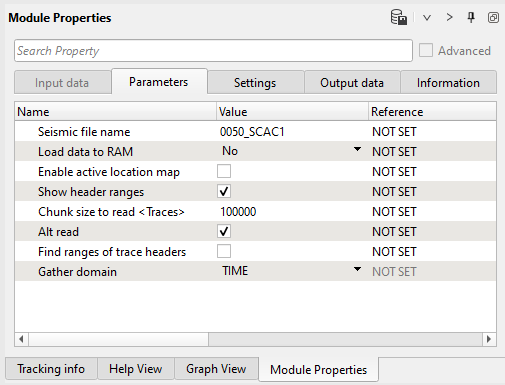
2) Sort traces - by SOURCE. Here we need to sort seismic traces for Seismic loop, not for SCAC (no sort is required for it). Therefore, add Sort traces module and set SOURCE_SEQ, SOURCE_LINE in Trace Grouping and RECEIVER_LINE as Trace sorting header (or just one header for sorting SOURCE_SEQ) for sorting as it is shown below:
Parameters:

3) Seismic loop. Connect trace headers vector (Input sorted headers) from the Sort traces module output and seismic (Input SEG-Y data handle) from Read seismic traces. Select some source point for testing, let's take Sequential gather number = 55 (or different, it is up to you) as shown in the parameters:
Parameters:
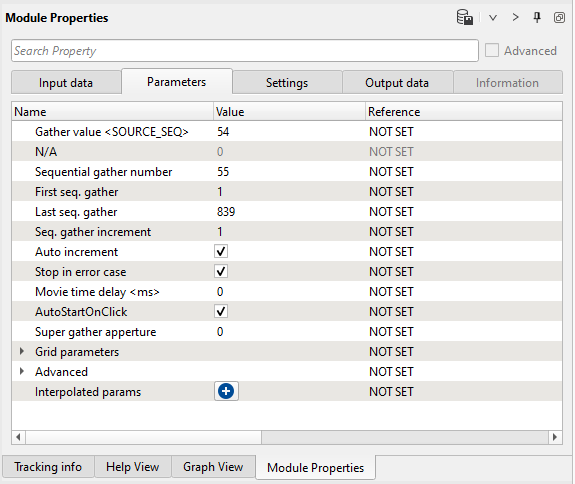
4) Despike module allows the user to remove amplitude spikes (high amplitude values that are many times larger than adjacent values) from seismic traces. Spikes are not normal seismic signal, they are usually created by the recording equipment and hence should be removed. Spike identification and removal is based on the average (depending on the chosen parameter) amplitude calculated in a time window and spatial window for each sample of the seismic trace in accordance with chosen threshold coefficient.
Parameters:
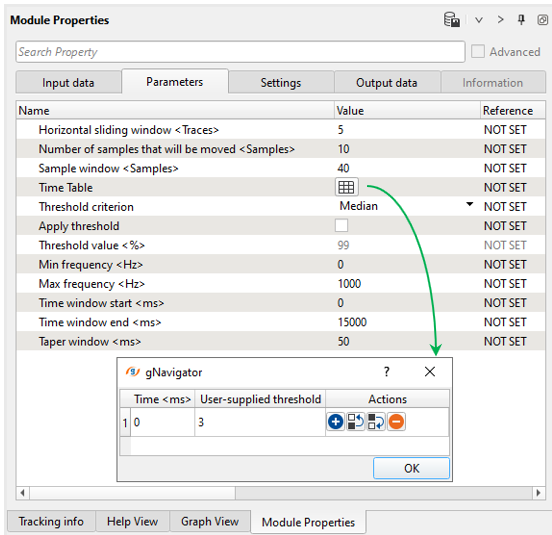
Horizontal sliding window - number of traces to include in the amplitude calculations.
Number of samples that will be moved - number of samples of the seismic trace feasible for suppression;
Sample window - number of samples to include in the amplitude calculations;
Time Table - amplitude calculation type to use in the requested time/threshold parameters;
Threshold criterion - selected the threshold type from the drop down menu. By default, it's Median;
Apply threshold - by default, it is FALSE. If checked this option, it will apply the threshold;
Threshold value - this is will be activated if the user selects the Apply threshold option;
Min frequency - provide the minimum frequency value;
Max frequency - provide the maximum frequency value;
Time window start - define the starting time window to do the despiking;
Time window end - define the end time window;
Taper window - define the taper window.
Settings:
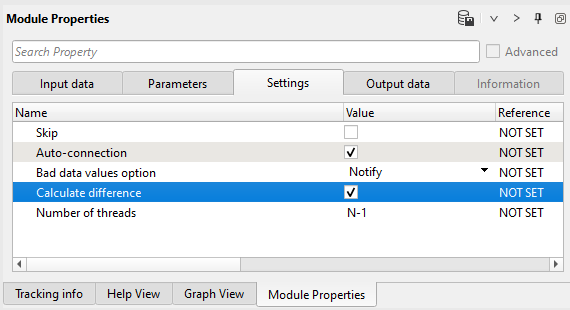
Execute Despike and check the result (Input / Output / Difference windows):

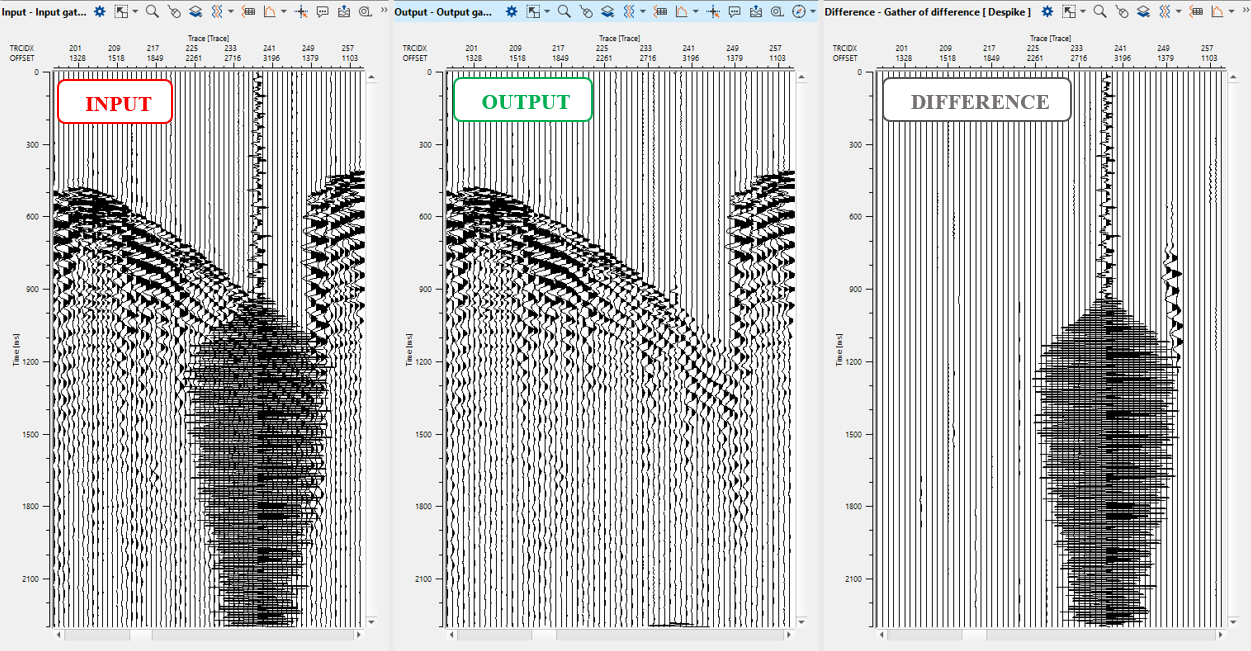
Estimate an amplitude frequency spectrum:

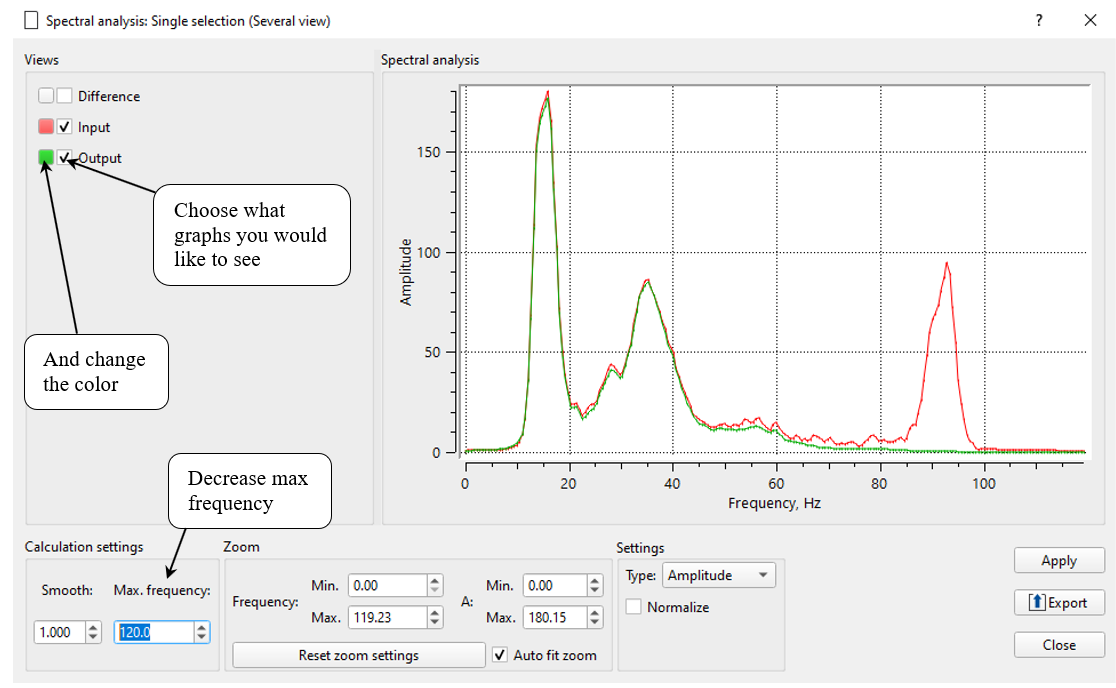
======================
5) LMO. Apply linear move out (LMO) correction before FDNA (spike and ground roll denoise) and reverse it after, just for more efficiency of attenuation (increaase samples statistics in the upper part of the gather). Use the following parameters for LMO:
Input data:
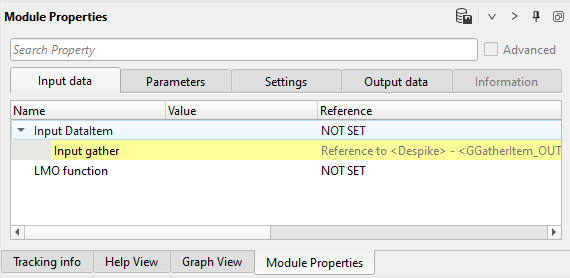
Parameters:

Execute the module, open all vista groups and check result. Please, remember those actions/steps for almost every module, we won't have this explanation every time further:
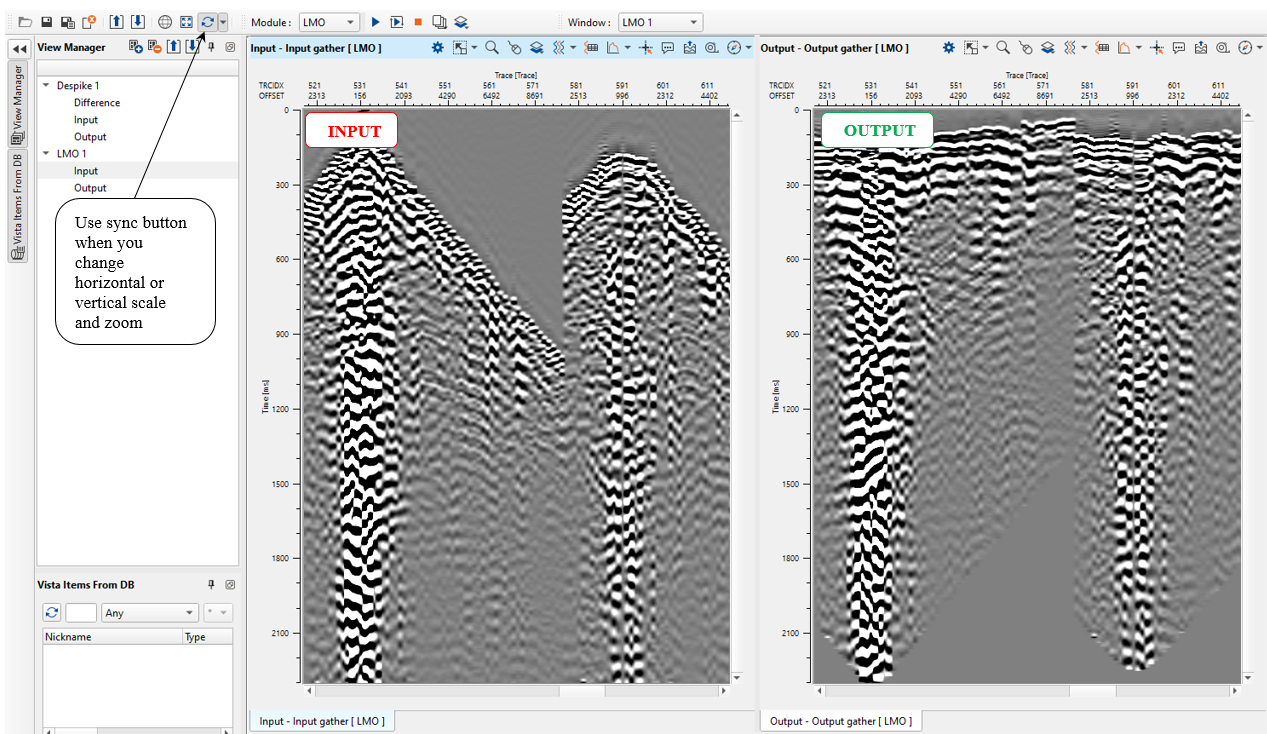
6) FDNA (Frequency Dependent Noise Attenuation) module uses frequency-dependent and time-variant algorithm where an amplitude threshold values are defined in a trace neighbor area (T-X) for detecting and noise attenuation according to different frequencies and different time windows. The attenuation process consists of two steps – First prepare the etalon (model) and noise attenuation data sets. The etalon should contain only the signal zones, with the noise zone muted (see Pic.1). The module estimates the median value of the amplitude spectrum in the sliding windows of the etalon data set, and for each window computes an operator using the threshold value. The procedure attenuates amplitudes whose values exceed the specified threshold.
Input data – Two seismic data sets are input to the FDNA module.
The Input gather are 2D/3D seismic gathers in source or receiver sort order. It is better if they are NMO corrected and static corrections have been applied, but for this step we can apply denoise sequence in a soft mode without NMO correction.
The Model gather is the etalon of 2D/3D seismic gathers in source or receiver sort order. The same idea: it is better if they are NMO corrected and static corrections have been applied, but for this step we can apply denoise sequence in a soft mode without NMO correction.
Seismic loop makes automatic connections between all modules in a sequence under that seismic loop and the user cannot disconnect them. In this case, we need to use an additional Flow module inside of the Seismic loop for etalon preparation. Put the mute modules into a Flow inserted into the Seismic loop and then connect the output muted data to the Model gather field of the Input data tab of the FDNA module. The Input gather on the Input data tab will be automatically connected to the previous module in the Seismic loop processing flow.
Firstly, we need to create an etalon for FDNA by using Mute by velocity module:

Create a model (etalon) for FDNA via Mute. Put Mute inside the Flow and create a mute function as shown below:
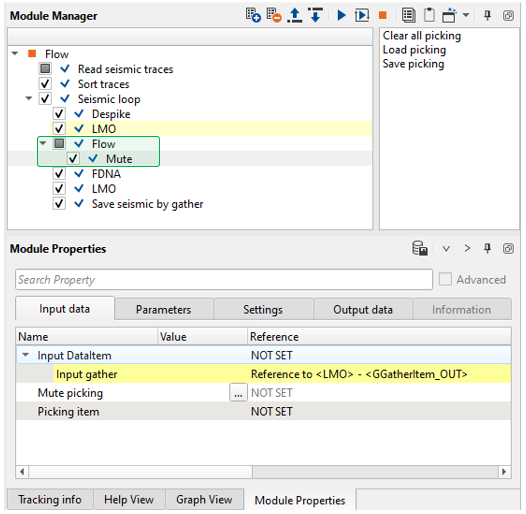
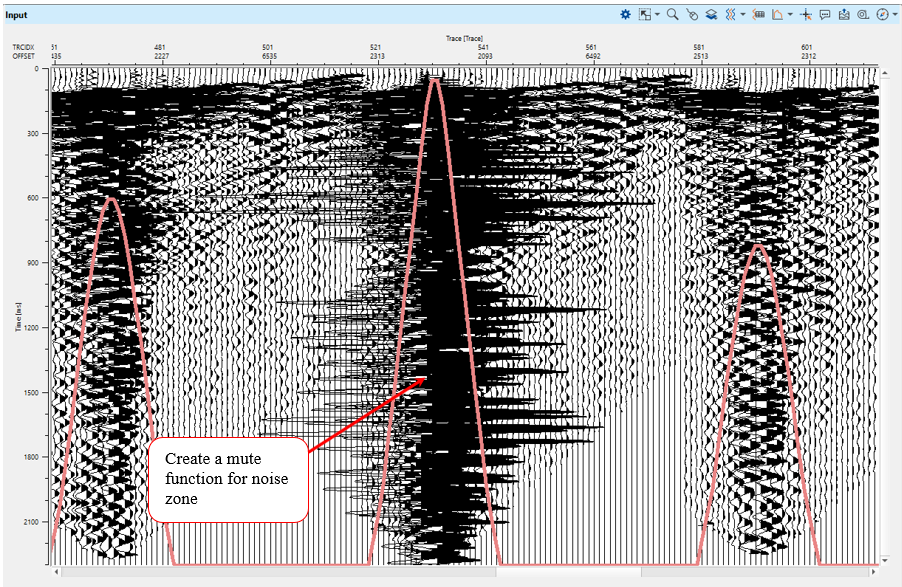
Mute module takes care of the shallow part of the data and mute the ground roll noise accordingly. We need to connect input Model gather (etalon) with the output from the Mute module and Input gather from the output LMO:
Input data:
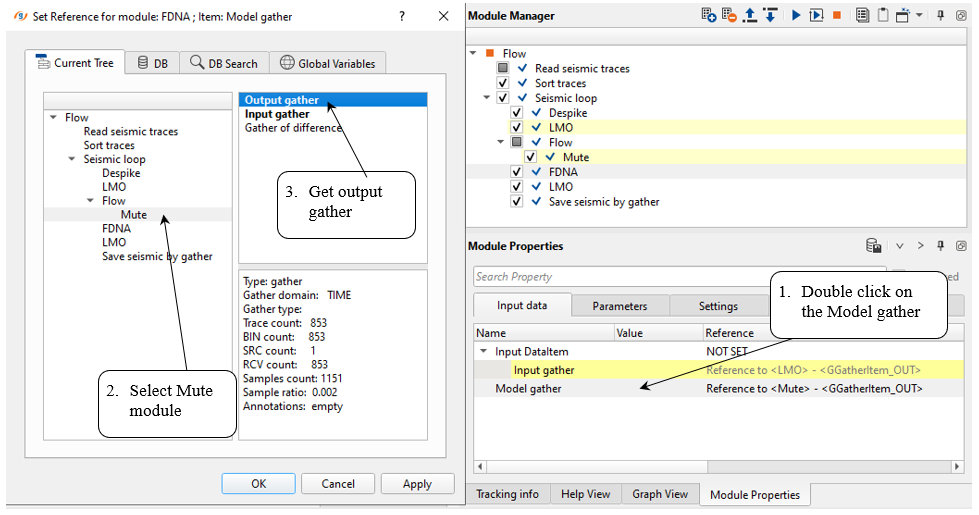
Parameters:

Parameter definition:
Trace window type: one window or multi-window;
Trace window[-1 - all traces]
Number of traces to use for the sliding window. This window is used for local attenuation.
Default: -1 (all traces)
Range: from 1 to max traces in the input gather
Time window
Time in milliseconds for sliding window. This window used for local attenuation. The taper zone between sliding windows is ¼ of time window length default 200ms.
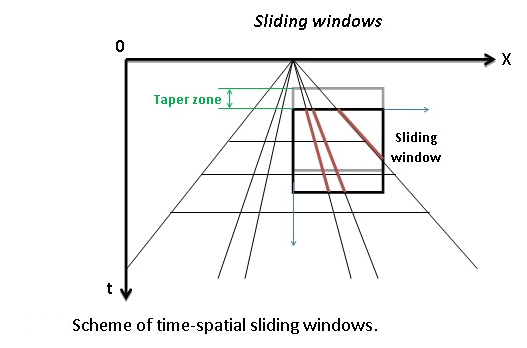
Sliding time window - Amount to advance the sliding time window each shift
Iteration number - Define the number of iterations to perform. The more number of iterations, more run time.
Collection frequency time windows
Three parameters of basic control noise attenuation:
• Frequency– frequency for attenuation;
• Time– time value for threshold;
• Threshold– the limiting parameter for calculating threshold values to attenuate excessive amplitudes.
Carefully prepare the etalon (model) data, try to mute the high amplitude zones and include the signal zones.
Control the noise attenuation by using the threshold parameters and the ability to specify the thresholds in a time variant manner and by frequency.
This procedure is more effective in the first steps of the seismic data processing flow when noise zones still have high amplitudes. The first step is soft one, but we will do noise attenuation after deconvolution and make harsher parameters in order to remove all residual noise. Noticed, that applying LMO is not obligatory, more over, usually it is better don not use LMO for FDNA process.
Execute FDNA and check the result:
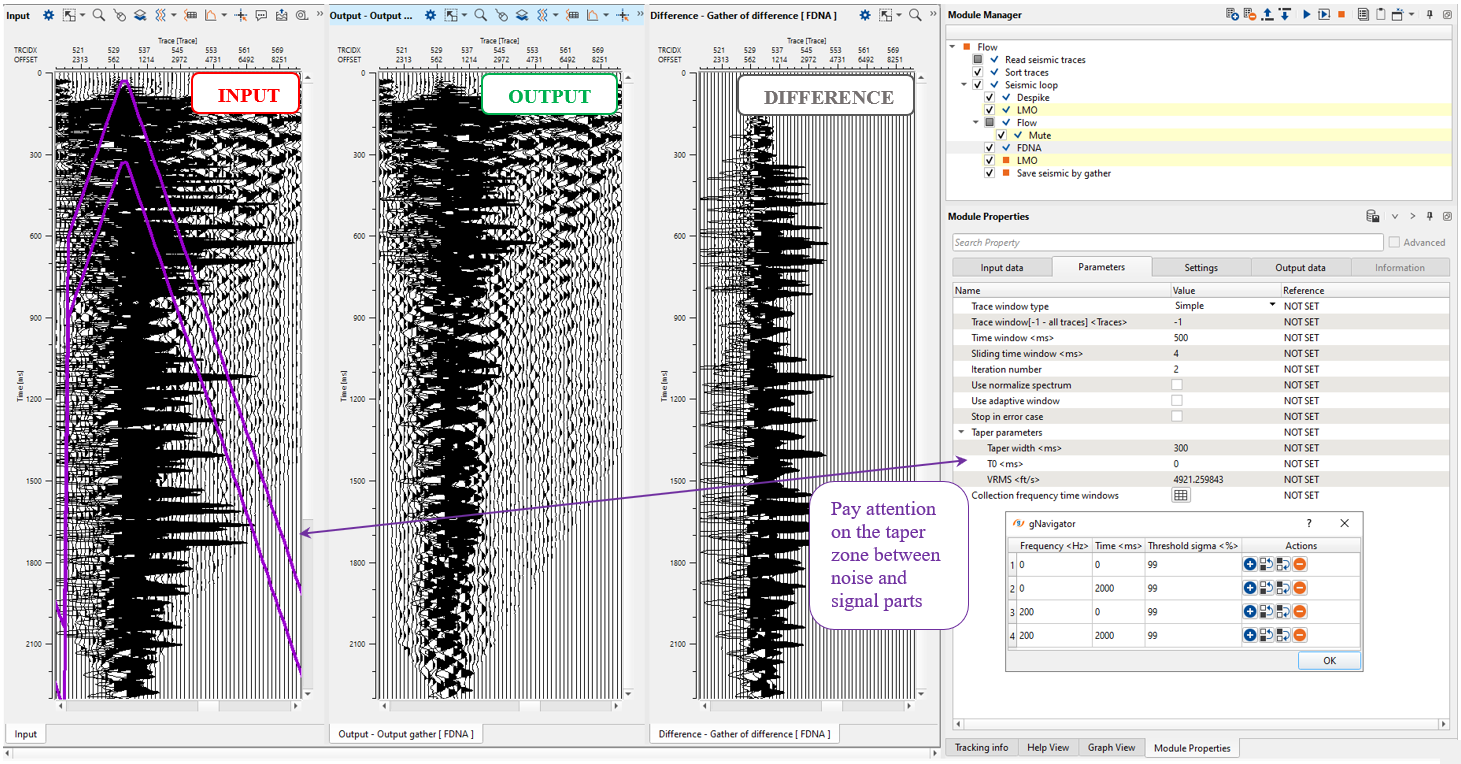
Estimate AFS (Amplitude Frequency Spectrum):
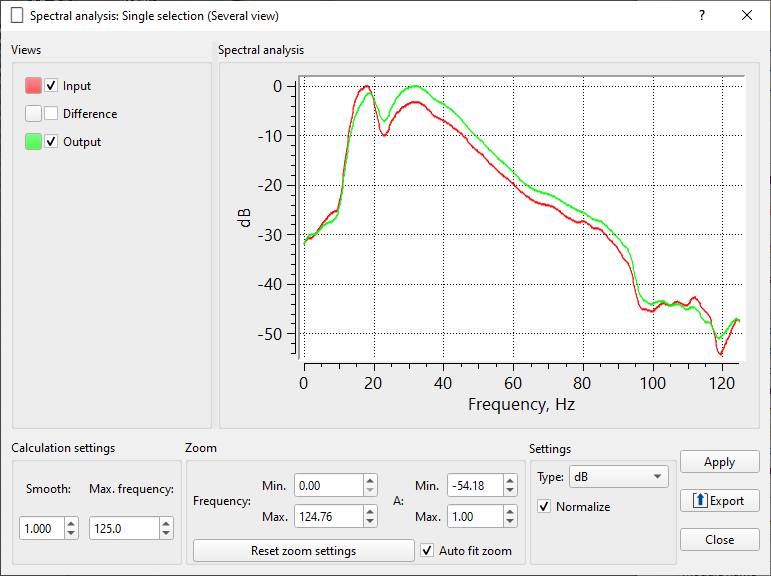
Define a name for data set 0050_Denoise and launch denoise workflow for the entire seismic data.
Create a stack before, after denoise and difference like we already done on the previous step (Spherical divergence chapter):

----------------------------------------------------------------------------------------------------------------------------------------------------------
 Pay attention that in g-Platform system we are able to execute workflows with using many threads and nodes in parallel mode. For example, Distributed Seismic loop module may be used in case of large 3D data set. Pay attention that in g-Platform system we are able to execute workflows with using many threads and nodes in parallel mode. For example, Distributed Seismic loop module may be used in case of large 3D data set.
-----------------------------------------------------------------------------------------------------------------------------------------------------------
7) LMO. Reverse linear move out (LMO) correction after FDNA (spike and ground roll denoise). Use the following parameters for LMO:
Input data:
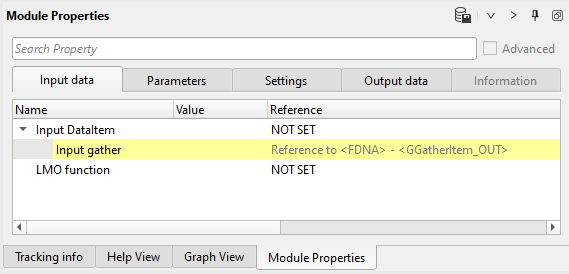
Parameters:
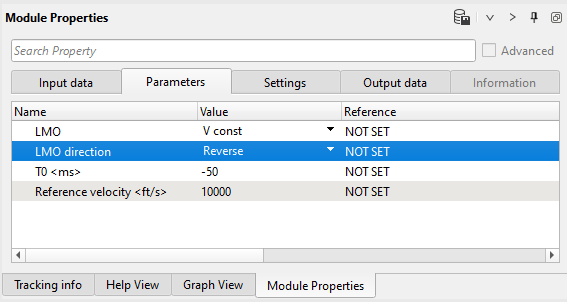
8) Save seismic by gather is used to save the seismic data in g-Platform’s internal format with .gsd extension. This module should be used within the Seismic Loop. Write a name of
Define a name for output data set 0060_Denoise_pre_decon in Save seismic by gather module . Execute Seismic loop for the entire data (press  button from upper menu). button from upper menu).

 If you have any questions, please send an e-mail to: support@geomage.com If you have any questions, please send an e-mail to: support@geomage.com
 Frequency Dependent noise attenuation (FDNA) - Geomage g-Platform - YouTube Frequency Dependent noise attenuation (FDNA) - Geomage g-Platform - YouTube
 Despike - Geomage g-Platform - YouTube Despike - Geomage g-Platform - YouTube
| 